In-Depth Insights into Avian Biology and Care

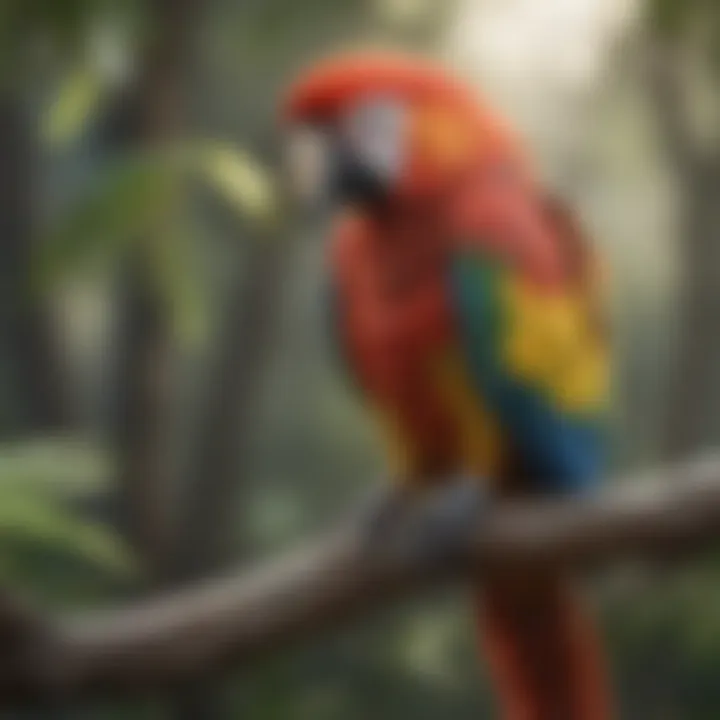
Intro
The world of birds is rich and diverse. Understanding their biology and behavior is crucial for both pet owners and enthusiasts. This article explores various aspects of avian life, including how to create a nurturing environment for pet birds. We will cover critical topics such as biology, care, training, health, and enrichment. This guide aims to empower pet owners in fostering a loving relationship with their avian companions.
Understanding Your Pet
Pet Behavior Basics
Birds are social creatures. Their behaviors often reflect their instincts and environmental factors. For instance, many pet birds enjoy interacting with their owners and other birds. Understanding vocalizations and body language is essential in interpreting their feelings and needs.
A common characteristic is preening, which is not just about cleanliness but also strengthening social bonds. Recognizing signs of stress or boredom is equally important. Providing an engaging environment helps mitigate negative behaviors that often stem from this boredom.
Common Breed Characteristics
Each breed displays distinct traits and needs. For example, African Grey Parrots are known for their intelligence and vocal mimicry, while Budgerigars are more playful and social. It is essential to familiarize yourself with your bird's specific breed to cater to its requirements, making informed choices in care, socialization, and training.
Species-Specific Needs
Every bird species has unique dietary and environmental needs. For example, cockatiels thrive in slightly warmer conditions and require a diet rich in proteins and greens. Conversely, canaries may need a cool, quiet environment and a diet with more seeds. Understanding these specifics aids in proper care and helps build a stronger bond.
Pet Care and Maintenance
Feeding Guidelines
Proper nutrition is vital for maintaining a bird's health. A balanced diet includes seeds, pellets, fruits, and vegetables. Avoid foods like avocado and chocolate, which are toxic to birds. It is also important to adjust portions for different species.
Grooming Essentials
Regular grooming ensures a bird's feathers stay in good condition. This includes trimming nails and providing opportunities for bathing. Birds often enjoy misting with water or providing a shallow dish for bathing. Clean feathers effectively regulate body temperature.
Hygiene Practices
Hygiene is critical to a bird’s overall health. Regularly clean food and water dishes to prevent bacterial growth. The bird’s cage should be cleaned frequently, as droppings can lead to illness if left unattended. A well-maintained environment encourages healthier and happier birds.
Training and Development
Basic Commands and Skills
Training your bird can enhance communication and make daily interactions easier. Start with simple commands, such as “come” or “step up.” Using positive reinforcement is an effective technique. Treats serve as great motivation.
Behavioral Training Techniques
Behavioral training is crucial for addressing unwanted behaviors. Recognize triggers that lead to issues and address them. Consistent training methods improve the likelihood of desired behaviors.
Addressing Common Behavior Issues
Many birds exhibit common behavior problems such as screaming or feather plucking. Identifying the cause is essential. For instance, boredom often leads to such behaviors. Increase stimulation through toys or social interaction to mitigate these issues.
Health and Wellness
Routine Vet Check-ups
Regular veterinary visits are necessary for preventive health. An avian vet can provide essential check-ups, monitor health markers, and recommend specific care practices suited to your bird’s species.
Vaccination Needs
Vaccinations help protect birds from common diseases. Discuss vaccination schedules with your veterinarian to ensure your pet is adequately protected.
Recognizing Signs of Illness
Be vigilant in observing your bird's behavior. Signs of illness include changes in appetite, lethargy, or unusual feather changes. Early detection is key in managing health issues effectively.
Enrichment and Activities
Indoor vs. Outdoor Activities
Engaging birds in activities is essential for mental stimulation. Indoor activities can include puzzle toys or foraging initiatives. Outdoor trips, when safe, provide additional stimulation through new sights and sounds.
Interactive Toys and Games
Interactive toys enhance self-entertainment and prevent boredom. Look for toys that encourage problem-solving or physical interaction. Rotate toys regularly to maintain interest.
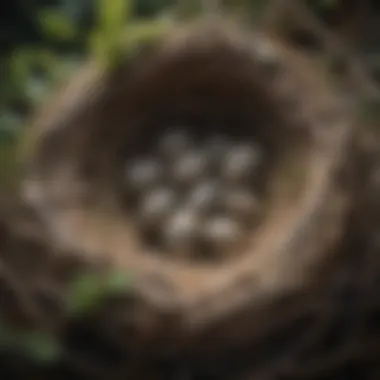
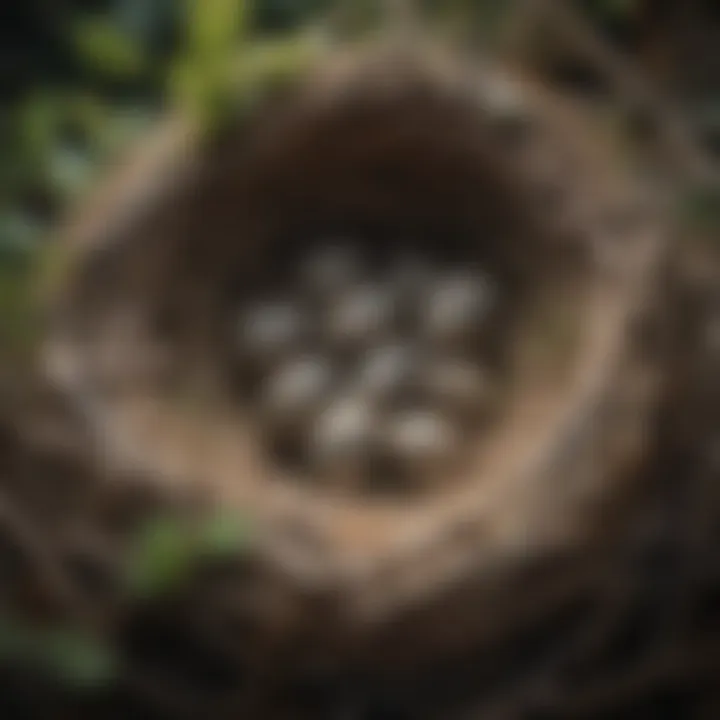
Socialization Opportunities
Socialization is key for a well-adjusted pet. Regular interaction with family members and other pets can promote a healthy social environment. Allowing birds time to interact with one another can improve their mental health and reduce stress.
Proper care and understanding of avian needs create a fulfilling life for both birds and owners, enhancing companionship significantly.
Through examining each of these aspects, pet owners can better understand their avian companions and provide the best care possible.
Foreword to Avian Biology
Understanding avian biology is crucial for anyone interested in birds, whether they are pet owners, enthusiasts, or researchers. This segment lays the foundation for all subsequent discussions about bird behavior, habitat, and ecological roles. By grasping the intricacies of avian biology, individuals can realize the significance of proper care and companionship for pet birds, thus enhancing their overall experience with these creatures.
Defining the Class Aves
Birds belong to the class Aves, which is characterized by several distinctive features. Most notably, they possess feathers—a defining characteristic that sets them apart from other animals. Feathers serve various purposes, including insulation, waterproofing, and most importantly, aiding in flight. Birds also possess a lightweight skeletal structure that enhances their ability to fly. Their bones are often hollow, which reduces overall weight without sacrificing strength.
Additionally, birds exhibit a unique respiratory system that allows for efficient gas exchange. Their lungs are interconnected with air sacs, enabling a continuous flow of air during both inhalation and exhalation. This adaptation is essential for sustaining the high metabolic rates required for flight. Furthermore, birds lay hard-shelled eggs, which provide protection for developing embryos and facilitate significant parental investment.
Understanding these core aspects of the class Aves provides a baseline for deeper exploration into their diversity and behavioral adaptations.
Bird Classification Systems
Birds exhibit an incredible range of diversity, leading to the establishment of various classification systems. The primary system used is the Linnaean taxonomy, which categorizes species based on shared characteristics. This hierarchy includes several ranks: domain, kingdom, phylum, class, order, family, genus, and species. In the context of birds, the class Aves is divided into numerous Orders such as Passeriformes (perching birds), Falconiformes (birds of prey), and Psittaciformes (parrots).
Species classification is not only about scientific interest but also essential for conservation efforts. It helps identify species that might be threatened or endangered and enables targeted conservation measures.
In recent times, molecular data has refined our understanding of bird relationships, prompting revisions to traditional classifications. These developments demonstrate how scientific inquiry can reshape our perspective on avian life, reflecting their evolutionary history and ecological significance.
"Classification systems in ornithology are not static but evolve as new information comes to light, helping us to understand biodiversity better."
In summary, a solid grasp of avian biology and classification enhances our appreciation of birds and fosters responsible ownership and conservation. Understanding the features that define the class Aves and the frameworks used to classify birds will enrich readers’ knowledge and help them support their avian companions effectively.
Physical Characteristics of Birds
Understanding the physical characteristics of birds is crucial in appreciating their role in ecosystems and their care as pets. Birds possess unique adaptations that enable them to thrive in diverse environments. This section breaks down significant elements of avian anatomy, providing insights that are valuable for pet owners and animal lovers.
Skeletal Structure
The skeletal structure of birds is a remarkable example of evolutionary adaptation. Birds have a lightweight skeleton that helps them maintain flight. Their bones are not only hollow but also structurally reinforced, making them both light and strong. This structural design reduces body weight without sacrificing stability.
Bones, such as the keel, are prominent. The keel serves as an anchor point for flight muscles, facilitating strong wing beats necessary for movement. Other skeletal features, such as fused bones in the skull, improve aerodynamic performance while enhancing sensory capabilities. Understanding these aspects is essential for pet owners.
Knowledge about a bird’s skeleton helps owners maintain proper health, as skeletal issues can lead to severe mobility problems. Observing your bird’s posture and movements regularly can detect early signs of skeletal distress.
Feather Types and Functions
Feathers are one of the most distinctive characteristics of birds, serving various vital functions. There are several types of feathers, including contour feathers, down feathers, and flight feathers.
- Contour Feathers: These feathers typically cover the body, providing shape and streamlining the bird’s appearance.
- Down Feathers: Known for their insulating properties, these feathers trap air, keeping birds warm in cold environments.
- Flight Feathers: Positioned on the wings and tail, flight feathers play a crucial role in aerodynamics, affecting lift and maneuverability.
Feathers require maintenance to remain functional. This involves preening, which helps clean feathers and distribute natural oils. For pet owners, offering opportunities for bathing or showering can mimic this behavior, promoting feather health.
Beak Adaptations
The diversity in beak shape and size among birds is directly related to their diet and feeding strategies. Beak adaptations are highly specialized to suit their eating habits, showing a fascinating example of evolutionary design.
- Seed-eating Birds: Typically have strong, conical beaks to crack hard shells.
- Nectar-feeding Birds: Possess long, slender beaks designed for reaching deep into flowers.
- Carnivorous Birds: Often have hooked beaks for tearing flesh.
Pet owners should be aware that a bird's beak requires care. Balanced nutrition that aligns with a bird's natural diet promotes healthy beak growth and shape. Regular check-ups with a veterinarian can help identify any issues related to beak health.
Understanding the physical attributes of birds empowers pet owners to provide better care and ensures that these avian companions thrive within their environment.
Such insights are useful not just for pet birds but also for appreciating wild species and their ecological roles. Recognizing these physical traits enables better appreciation of avian life.
Avian Behavior and Communication
The examination of birds' behavior and communication is crucial in understanding their lives and social interactions. This section aims to unravel the complexities of avian interactions, emphasizing how these behaviors are not only fascinating but fundamentally important for pet owners and enthusiasts. Specific elements such as social structures, vocalizations, and mating rituals provide insight into how birds connect with one another within their environments. Understanding these behaviors allows pet owners to better nurture their own birds' emotional and physical well-being.
Social Structures in Bird Communities
Birds are social creatures, often living in groups that demonstrate various hierarchical structures. These social structures can range from loose flocks to highly organized colonies. Knowledge of social dynamics among birds can help pet owners appreciate their pets' needs for companionship and social interaction.
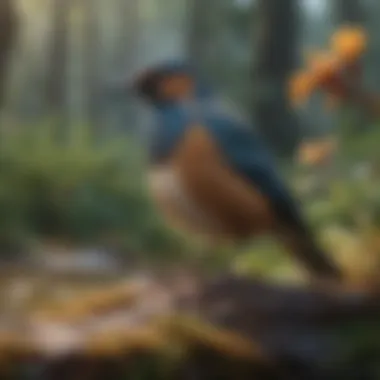
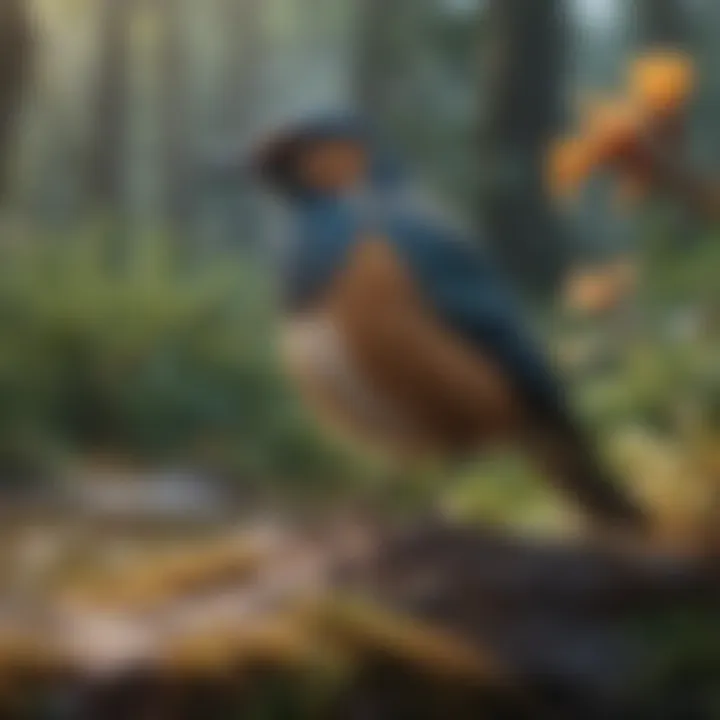
- Hierarchy and Role: Some species have defined roles. For instance, in a flock of parrots, there might be a leader, while others serve different functions, like sentinel or forager. Learning about these roles enriches the understanding of birds' social networks.
- Flocking Behavior: Birds often flock to increase safety from predators. This behavior is vital for survival and influences feeding and nesting practices. Pet owners can consider pairing birds to satisfy their social instincts.
- Territoriality: Many bird species are territorial, especially during breeding seasons. Recognizing signs of aggression or stress related to territory can be crucial for maintaining harmony in a multi-bird household.
Vocalizations and Their Meanings
A significant part of avian communication comes from vocalizations. Each bird species has its own specific calls and songs, each with different meanings. Understanding these vocalizations provides pet owners valuable insight into their birds' emotions and needs.
- Types of Sounds: Birds produce diverse sounds – from chirps and whistles to complex songs. These sounds convey messages ranging from alarm calls to mating displays. Observing your pet bird’s vocalizations can help in understanding its feelings.
- Context Matters: The situation often dictates what sound is made. For example, a loud screech may indicate danger, while soft chirps could mean contentment. Knowing the context can lead to improved care and a better relationship with pet birds.
- Learning and Mimicking: Many pet birds, like parakeets, can mimic human speech or sounds from their environment. This reflects their social nature and desire for interaction. Engaging with them through sounds can encourage their vocal development.
Mating Rituals and Nesting Behaviors
Mating rituals and nesting behaviors are essential aspects of avian life, showcasing the importance of reproduction for species survival. For pet owners, understanding these behaviors helps create an appropriate environment for breeding if they choose to encourage it.
- Courtship Displays: Many birds engage in elaborate courtship displays. This can include dancing, feather displays, or singing. These acts not only attract mates but can also be seen as bonding rituals.
- Nesting Sites: Birds choose specific locations for nesting based on safety and resource availability. Observing how pet birds select or build nests can indicate their breeding readiness. Providing suitable nesting materials can encourage natural behaviors.
- Parental Care: Once eggs are laid, both parents often participate in caring for them. This nurturing behavior can highlight the importance of a stable environment for raising young birds successfully.
Understanding avian behavior and communication enriches interactions not just for the sake of knowledge, but ultimately enhances the quality of life for both pet birds and their owners.
Habitats of Birds
Bird habitats play a crucial role in maintaining the delicate balance of ecosystems. Understanding these habitats is essential for both conservation efforts and for pet owners who aspire to replicate natural settings that cater to their birds' needs. Various factors affect bird species distribution, such as food availability, nesting sites, and climate. By exploring the importance of habitats, we can appreciate the level of care birds require in both the wild and in domestic settings.
Types of Avian Habitats
Birds inhabit a wide array of environments, each offering unique resources and challenges. Some common habitat types include:
- Forests: These are rich ecosystems, providing food, shelter, and nesting sites. Many birds adapt to life among the trees, displaying a wide variety of colors and behaviors.
- Wetlands: Swamps and marshes are vital for many bird species. They offer abundant food sources, particularly in the form of insects and aquatic plants.
- Grasslands: Open spaces create ideal conditions for nesting and foraging. Birds such as the American robin thrive in these habitats, using the tall grass as cover.
- Urban Areas: Increasingly, birds have adapted to city environments. They find food from refuse and nest in buildings, demonstrating remarkable flexibility.
- Deserts: Harsh yet fascinating, desert habitats are home to species like the roadrunner. They have developed unique strategies to survive extreme conditions.
Overall, each habitat type plays a role in sustaining bird populations and fostering their diverse behaviors.
Adaptations to Various Environments
Birds exhibit remarkable adaptations that enhance their survival across distinct habitats. These changes can be physical or behavioral and are often tailored to specific environmental conditions.
- Physical Adaptations: Many birds have developed features that allow them to capitalize on the resources available in their habitats. For instance, the long legs of wading birds such as herons facilitate hunting in shallow waters.
- Behavioral Adaptations: Birds demonstrate varied feeding habits based on habitat. Insects are a primary food source for forest-dwelling species, while seed-eating birds dominate grasslands. Understanding these behaviors can enrich the experience of pet ownership. Choosing bird species that mirror these natural tendencies helps create more fulfilling environments.
"Adapting to local conditions is vital for survival. The ability to modify behavior and physical features influences a bird's success in the wild."
Roles of Birds in Ecosystems
Understanding the role of birds in ecosystems is crucial for appreciating their intrinsic value beyond their aesthetic appeal. Birds serve various ecological functions that ensure the health and balance of their environments. This section dives into two primary dimensions of their roles: as pollinators and seed dispersers, and as predators within food webs.
Pollinators and Seed Dispersers
Many birds, such as hummingbirds and certain species of finches, play a significant role as pollinators. Their unique feeding habits, which often involve extracting nectar from flowers, facilitate the reproduction of many plant species. This interaction promotes genetic diversity in plant populations, which is essential for ecological resilience.
In addition to pollination, birds also contribute to seed dispersal. Species such as the American robin ingest fruits and later excrete the seeds at various locations. This process enhances plant propagation, allowing for the spread of flora across vast distances. Some birds even preferentially eat seeds from certain plants, influencing which species thrive in a habitat.
"Birds contribute not just to their immediate environment, but to the broader ecosystem through their interactions with plants."
These functions of pollination and seed dispersal are particularly vital in habitats where plants depend on animals for reproduction. Without birds, many plants may struggle to reproduce, leading to a decline in biodiversity and ecosystem stability. This interdependence highlights the necessity of conserving bird populations, as their decline can have cascading effects on entire ecosystems.
Predators and Prey Dynamics
Birds also occupy a critical position as predators in various ecosystems. They help maintain the balance of populations among smaller animals and insects. Raptors, like hawks and eagles, are essential in controlling rodent populations. Other birds, such as sparrows, consume insects, aiding in pest management in agricultural settings.
The relationships between birds and their prey are complex and multifaceted. Birds often have specific hunting strategies or foraging behaviors that adapt to the availability of prey in their environment. For example, the barn owl uses silent flight and exceptional hearing to locate rodents in total darkness, thus emphasizing the predator-prey dynamic that characterizes their ecological role.
Birds, therefore, serve as bioindicators. Their presence, absence, or population trends can signal changes in ecosystem health. Monitoring bird populations can give researchers insights into environmental changes, potentially guiding conservation strategies.
Understanding these roles fulfills not just an academic curiosity. It empowers pet owners and animal lovers to appreciate the interconnectedness of life forms. By recognizing the ecological significance of birds, we can foster greater respect and support for conservation efforts aimed at protecting their habitats for future generations.
Avian Nutrition and Health
Proper nutrition is crucial to maintain the overall health and wellbeing of birds. In fact, the dietary choices of any avian species significantly influence their behavior, longevity, and immune function. Thus, understanding the basics of avian nutrition is fundamental for pet owners and those interested in caring for birds. This section delves into the dietary needs of pet birds as well as common health issues related to improper nutrition.
Dietary Needs of Pet Birds
Pet birds require a well-balanced diet to thrive. Their needs can vary depending on the species, age, and health condition. Most birds benefit from a combination of seeds, pellets, fruits, and vegetables.
Seeds provide essential fatty acids and energy but should not be the sole component of the diet due to their high-fat content.
Pellets are formulated to offer a balanced nutrition that meet the specific needs of birds. They should constitute a major part of a pet bird's diet.
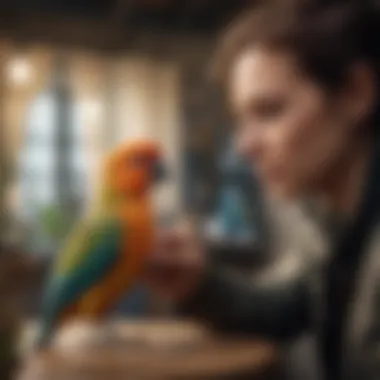
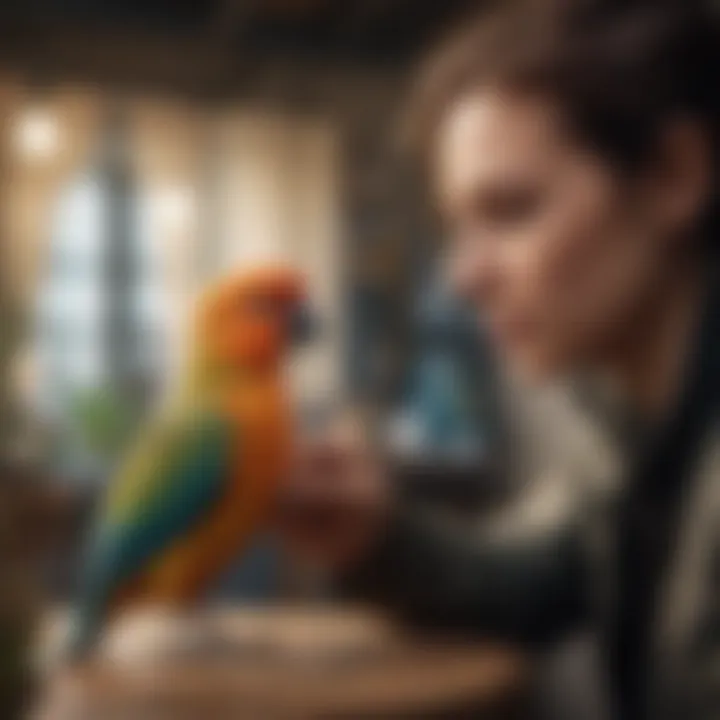
Fruits and vegetables offer vitamins, minerals, and fiber that are vital for digestion and overall health. Some safe options include apples, carrots, and leafy greens.
- Providing a mixture keeps dietary boredom at bay.
- Fresh, clean water must always be available to ensure hydration.
- Bird owners should avoid giving processed foods or those high in salt, sugar, or fat.
Proper nutrition not only strengthens the immune system but also enhances cognitive function in birds, making it essential to offer a wide variety of foods.
Common Health Issues
Birds may face several health issues linked to inadequate nutrition. Understanding these can prevent serious health problems.
- Obesity: A common concern among pet birds, obesity often results from a diet high in seeds and low in other nutrients.
- Vitamin Deficiencies: Birds require various vitamins for optimal health. For instance, lack of Vitamin A can lead to respiratory diseases and skin issues.
- Gastrointestinal Disorders: Poor nutrition can upset the delicate balance of the avian digestive system. This might manifest as diarrhea or regurgitation, which often indicates an unhealthy diet.
- It can lead to heart disease and other serious health conditions.
"A balanced diet not only supports physical health but also enhances behavioral traits and emotional wellbeing in birds."
To summarize, nutrition plays a vital role in avian health. By understanding dietary needs and common health issues, pet owners can make informed choices that will positively affect their bird's quality of life.
Caring for Pet Birds
Caring for pet birds is an essential aspect of avian life that significantly impacts their well-being and longevity. Understanding the specific needs of each species can enhance both the birds' quality of life and the bond between pet owners and their avian companions. Pet birds exhibit unique behavior and require specialized care. This section focuses on the importance of providing optimal living conditions and social interaction for pet birds, ensuring they thrive in a domestic environment.
Optimal Living Conditions
Creating optimal living conditions for pet birds is crucial. Each species has its own preferences, but common elements must be considered regardless of the breed.
- Cage Size and Design: The size and design of the cage should accommodate the bird's natural behaviors. Birds need space to move, exercise, and play. Larger cages are generally recommended, allowing for flight and exploration.
- Location of the Cage: Placing the cage in a social area of the home is important. Birds are social creatures and benefit from being part of family activities, but it should also be away from direct sunlight, drafts, or loud noises that can cause stress.
- Lighting and Temperature: Proper lighting is necessary. Birds benefit from natural sunlight, so positioning near a window (with protection from direct rays) is effective. Also, maintaining a stable temperature within a comfortable range, typically between 65°F to 80°F, is vital for their health.
- Cleanliness: Regular cleaning routines help prevent diseases. Bird owners should clean cages, food dishes, and toys often to reduce bacteria or mold buildup. A clean environment fosters good health and reduces the risk of illness.
As the renowned ornithologist Dr. John Smith stated, > "Providing a suitable environment not only improves a bird’s physical health but also its mental well-being."
Social Interaction and Enrichment Activities
Social interaction is another vital component of avian care. Birds are intelligent and social animals that require engagement to avoid boredom and stress. Some methods to enhance interaction and provide enrichment include:
- Daily Interaction: Regular handling and communication foster trust and familiarity. Birds enjoy conversations, and their response can be quite interactive, making them feel valued and loved.
- Toys and Games: Offering various toys can stimulate birds mentally and physically. Toys that encourage problem-solving or mimic interaction, such as puzzle feeders, promote natural behaviors while keeping them occupied.
- Flight Time: Allowing supervised flight time outside the cage is critical for health. Birds can exercise their wings and engage in exploration, which offers both physical benefits and mental enrichment.
- Companionship: For social species, companionship with another bird is beneficial. A second bird can provide social interaction that a human might not replicate, reducing feelings of loneliness and boredom.
Creating a structured daily routine that incorporates these aspects will not only meet a pet bird’s physical needs but also nurture their emotional health. This approach leads to a happier pet and a more fulfilling relationship between the bird and its owner.
Bird Conservation Efforts
Bird conservation is a crucial aspect of maintaining biodiversity and ecological balance. As avian species face numerous challenges, understanding these efforts is essential not only for enthusiasts but also for anyone who values the environment. The protection of birds contributes significantly to preserving ecosystems.
Importance of Bird Conservation
Birds serve vital roles in nature, from pollination to seed dispersal. They influence plant community dynamics and control pest populations. Therefore, their conservation is not just about the birds themselves but about safeguarding the ecosystems where they thrive. Conservation efforts can lead to healthier environments, benefiting many species, including humans.
Threats to Bird Populations
Birds today face significant threats, largely caused by human actions. Several factors contribute to the decline in avian populations:
- Habitat Loss: Urban sprawl and agriculture often destroy natural habitats. As forests and wetlands disappear, birds lose nesting and feeding grounds.
- Climate Change: Shifts in climate patterns alter migration routes and breeding seasons. Many birds find it difficult to adapt to these rapid changes.
- Pollution: Chemicals in pesticides and pollutants in water sources harm birds. Contaminated food sources lead to health problems and reduce reproductive success.
- Invasive Species: Non-native species disrupt local ecosystems, outcompeting native birds for resources. They can also introduce diseases that native birds are unprepared to fight.
Understanding and mitigating these threats is essential for preserving avian diversity.
Community Involvement in Bird Surveys
Engaging communities in bird surveys is an effective way to rally support for conservation initiatives. Citizen science projects empower individuals to contribute to data collection, which can inform conservation strategies. Here are some benefits of community involvement:
- Data Collection: Communities can help gather valuable data on bird populations, migrations, and behaviors. This information can aid in identifying trends and changes in population dynamics.
- Awareness Raising: Bird surveys can enhance public awareness about avian decline. They encourage community members to appreciate local wildlife and understand its significance.
- Fostering Connections: Collaborative efforts build connections between community members and conservation organizations. This collaboration can lead to more effective communal actions and sustainable practices.
- Educational Opportunities: Surveys provide a platform for educational programs. Schools and local organizations can utilize these surveys to teach the importance of conservation to the younger generation.
Engaging communities in these efforts ultimately strengthens the bond between humans and nature, fostering a collective responsibility towards avian conservation.
Closure and Future Perspectives
In exploring the intricacies of avian life, it becomes clear that birds are not merely creatures to observe but vital components of our ecosystems. Understanding their biology, behavior, and roles within these ecosystems enhances our knowledge and enriches our lives as pet owners and enthusiasts. In this conclusion, we aim to highlight the continuous relationship between humans and birds, as well as the potential for future research that can further illuminate this fascinating subject.
The Ongoing Relationship Between Humans and Birds
Historically, birds have held significant importance in human culture and society. Their songs have inspired poets, while their vibrant colors have captivated artists. Beyond cultural significance, the companionship of pet birds has many benefits.
- Emotional Support: Birds provide companionship and can improve mental health through social interaction. Studies show that pet owners often report happiness and reduced stress levels.
- Educational Opportunities: Caring for birds can teach responsibility, empathy, and promote learning about wildlife and conservation.
- Contribution to Biodiversity Conservation: Engaging in birdwatching or supporting conservation initiatives can positively influence habitat preservation. Pet owners play a crucial role in advocating for bird welfare and conservation by understanding the threats their feathered friends face in the wild.
This ongoing relationship encourages a mutual respect and a greater awareness of the ecological importance of our avian companions. The more we learn about birds, the more we appreciate their complexities and the intrinsic value they contribute to our world.
Future Research Directions
Looking ahead, there are multiple avenues for future research that could enhance our understanding of avian life. These areas of inquiry not only promise new discoveries but also provide practical applications for improving bird care and conservation. Some potential topics for investigation include:
- Behavioral Studies: Research into avian social behavior and communication can yield insights into their needs and interactions. Understanding these dynamics may improve how we care for pet birds, ensuring they thrive in human environments.
- Habitat Preservation: Further studies on the impact of urbanization and climate change on bird habitats can guide conservation efforts. This research is vital for developing strategies to protect endangered species and their environments.
- Nutrition and Health: Investigating dietary needs of various bird species—especially those kept as pets—can improve the health and longevity of pet birds. Research can help identify the best diets, leading to enhanced well-being and reduced health issues.
"Advancing our knowledge about birds directly impacts their future and the relationships we cultivate with them."







